Earlier this year, we published a blog post titled Classic Flies are Classic for a Reason. The gist of that post was that the patterns that have stood the test of time have done so for a reason and given such should likely have a place in your fly box. Soft hackle flies are one of those classics. I have met many fly fishermen for which they are an absolute staple, employed on the stream as often as a pheasant tail nymph or parachute adams. But, I've met many more that don't fish them at all or only rarely do so, considering them sort of an oddity.

The truth is, however, that soft hackles are one of the most effective styles of flies ever created, and one that should have a home in virtually every angler's arsenal. Soft hackle fly patterns date back over half a millennia. Think about that. What are the chances that a pattern that has persisted for over 500 years doesn't deserve some significant real estate in your fly box?
In their simplest form, soft hackle flies are little more than thread or herl wrapped around the hook shank with a sparsely palmered hackle at the front. There are more elaborate versions that extend this basic design concept, but even the most feature-packed soft hackle flies are relatively feature-less.
Their lack of complexity in no way translates to lack of versatility. Quite the contrary. Much like with the woolly bugger which is so well-loved by many an angler, there is virtually no wrong way to fish a soft hackle fly. They can be dead drifted, where they will do an excellent job of imitating an emerging insect trapped in the film, a spinner or even a dun. They can be submerged and fished as you would a nymph, where the soft hackle fibers will dance and contribute to a buggy appearance. And they can be fished on the down-and-across-swing, perhaps the most common and deadly method of presentation for soft hackle flies, daring a trout not to strike.
Soft hackle flies also beg to be twitched, "pulsing" their hackle fibers and imparting vitality to the fly. Twitch them during the aforementioned deadly swing to further up the pattern's effectiveness, twitch them while they float along the surface, bringing your dry fly to life and twitch them while you dead drift them under an indicator. You can even strip or swim them, too.
There really is no wrong way. Whatever you do, fish them.





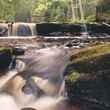





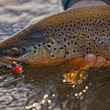
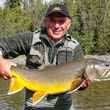



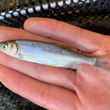




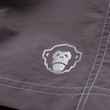




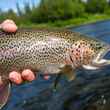
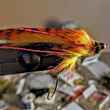

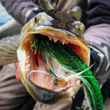
Comments
PoconoTrout replied on Permalink
Nothing to seek here, folks. I never catch fish on soft hackle flies. If you're not fishing them, you should continue not to.
Melinda replied on Permalink
I've done extremely well using them for arctic grayling throughout the season.
Juan replied on Permalink
Softhackles are the most productive flies ever. In slow and mid-fast waters are the best imitation of an emerger. If you do not catch any fish on them, maybe you are not casting to the water.
Andrew replied on Permalink
thats true!!!!
troutbum90 replied on Permalink
Then you do not know how to fish them. Sad to say you need to dive deeper into your etymology knowledge, and understand why the soft hackle can be so deadly.
Lenny replied on Permalink
This guy serious?
Anonymous replied on Permalink
obviously an ignorant neophyte.
Anonymous replied on Permalink
I think he's joking guys. You know, secret fly.
Harry Moran replied on Permalink
The Partridge and Orange soft hackle fly has been used very successfully for well over 100 years. No fly would be tied regularly for all
those years if they did not work well when used by skilled fly fishermen. In the very early days of soft hackles they were also called "spiders".
Glenn Dotter replied on Permalink
Hey Poconotrout,
I grew up fishing wet flies and soft hackle(just another form of wet fly) in the Poconos on the broadheads, the bushmills, the shinola and others while living in Marshall's Creek. If you don't catch trout on these flies it is clearly you and not the fly that is the problem. Get with someone who knows what they are doing and pay attention. It isn't very difficult. In fact it is the easiest form of fly fishing!
Casey K replied on Permalink
I always tell my customers how underrated soft hackle fishing is. One of my favorite way to catch trout. If you don't catch the fish after a nice long dead drift, do not be scared to swing them, this is where a ton of my trout are caught
Fred Rickson replied on Permalink
It's not the soft hackle that doesn't work for some folks, it's is a lack of lightly pulsing the fly that most folks don't get. It's not a steelhead swing, it's a rising insect trying to get to the surface.
Josh replied on Permalink
I fish soft hackles exclusively. Catch fish all the time. Less tying at vise and more fishing in the river!
Dean B. Cade replied on Permalink
Love swinging soft hackles, the tug is the drug!
Virgil Jones replied on Permalink
I try not to post anything confrontational. But in this case I can't not offer an opinion. You guys who have negative comments about soft hackles just either never gave it a chance, or don't know how to fish it. And as the author stated, anyone can fish a soft hackle. It's a no brainer. For most of us that is.
Glenn Dotter replied on Permalink
You are exactly right!
Pages